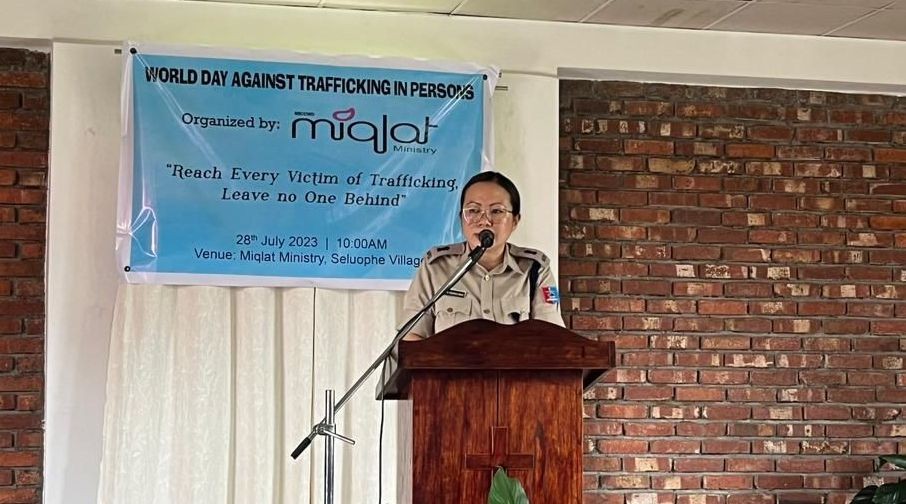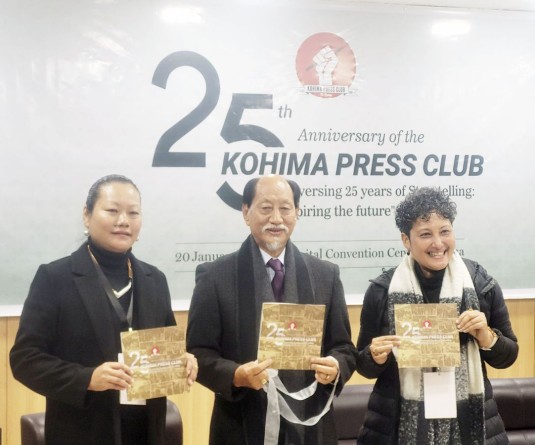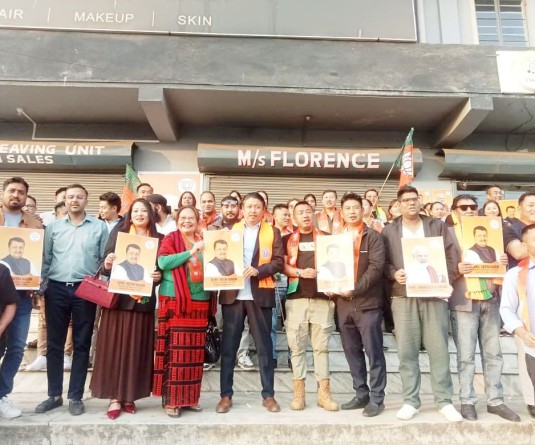Dr Tiamenla Phom, Additional Deputy Commissioner of Police (ADCP) for Women & Juvenile Dimapur during the observation of World Day Against Trafficking in Persons, organised by Miqlat Ministry NBCCWD at Seluophe village, Chümoukedima on July 28. (Morung Photo).

Sex trafficking and child exploitation seeing a rising trend
Morung Express News
Chümoukedima | July 28
Ever since the COVID-19 pandemic, Nagaland and Dimapur in particular has seen an alarming rise in the number of missing persons, informed Dr Tiamenla Phom, Additional Deputy Commissioner of Police (ADCP) for Women & Juvenile Dimapur. She added the rate of missing cases among females was relatively higher with an average of 3 cases every day. This includes children or minors as well.
“We believe, after COVID due to increased usage of social media among young adults and children, they easily fall prey to predators online,” she viewed. These unscrupulous individuals induce them with promise of good-paying jobs outside the state prompting victims to run away from home.
This was revealed during the observation of World Day against Trafficking in Persons, organised by Miqlat Ministry NBCCWD at Seluophe village, Chümoukedima on July 28. Speaking on the topic, ‘Addressing emerging human trafficking trends & prevention strategies,’ Phom noted that human trafficking, particularly among women and children, needs to be addressed at the earliest.
“Among the cases registered with us, 70% constituted of children below 18 years of age,” she said. However, she mentioned that 80% of these cases have been successfully traced by the police.
Another aspect that has been highlighted frequently in the media was on girls being rescued from spas and beauty parlours in metropolitan cities. “This also constitutes as human trafficking or in particular sex trafficking,” she said. There has been increase among Naga youths migrating to cities with promise of high paying jobs and many are unable to return home.
In Dimapur, the exploitation of sex workers has been steadily on the rise again, she mentioned. Some are forced into it for economic reasons while others are influenced to indulge in it because of social media. This was particularly the case for Naga women who fall in the latter category acting as escorts, she said.
Drug usage, especially the new drug ‘Sunflower,’ has also compelled young women to indulge in sex work to alleviate their addiction. She said that regrettably most churches and community leaders were not aware about these issues plaguing Dimapur. “We have to introspect and ask why these were happening,” she said.
Community intervention and state response
Based on these findings, she called for community effort to tackle these issues, with the involvement of village councils, civil societies, NGOs and government.
For the state response, she highlighted the existence of Child Line, State Resource Centre for Women under Social Welfare department, law enforcement, Child Welfare Committee, District Child Protection Officer among others.
She encouraged community leaders to take proactive steps such as organising awareness programmes, seminars in churches and schools in order to curb these issues. All the churches, village or colony councils needed to visit existing shelter homes, prisons, in order to be aware, she advised, while also calling for efforts to finding the reasons and answers as to why these trends occur.
Child labour, another form of human trafficking
When people first hear the word, ‘trafficking,’ they always associate it with women, she said. However, this was a misconception as the victims can be men, women or children. In the context of Nagaland, the two main aspects of human trafficking were women and children.
For children, it primarily constitutes those who were engaged as domestic helps in private homes who were brought from far-flung and financially disadvantaged families, she said. Rapid urbanisation has led to increase in demand for domestic helps in the form of under aged children.
“People search for children. Particularly from Eastern Nagaland, most of the domestic workers come from this region,” she observed. Most of the people were not aware that this constitutes as child trafficking and the people who bring these children get commissions. This is a blatant form of exploitation, she viewed.
“We have been advocating and agreeing that this practice should be stopped however we still do not take it seriously,” she lamented. Moreover, most of the parents of these exploited children do not want to register a case with the police. Naga customary laws also prevent an accused involved in trafficking or abusing a child, from being persecuted in a court of law.
During the programme, representatives from Seluophe, Singrijan, Ura, Diezephe, Murise, Tseithrongse and Bade villages were also in attendance. A talk on Church response to Human Trafficking was delivered by Yabang Longkumer, Pastor of Covenant Baptist Church Dimapur.





